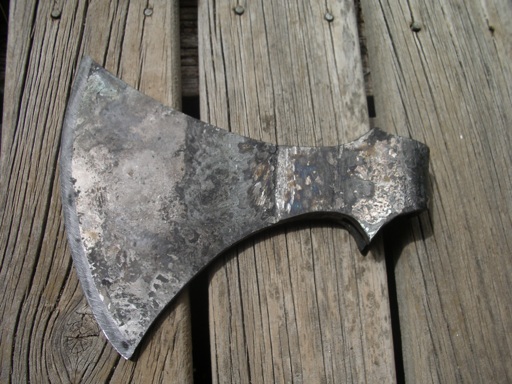I got excited in the workshop this morning and decided to make myself a long overdue axe. It's still looking quite rough at the moment (see picture below) and I'm in two minds about the finish I should apply to it. Should I leave it rough from the forge or should I polish it?
I guess I'd really like to know if anyone can tell me whether viking axes were necessarily polished or not. The viking period is not my area of expertise and I don't want to create a piece which is unnecessarily historically inaccurate. I still have to grind off the overlap between the socket and bit and alter the shape a little and was considering leaving it with a finish similar to that show in the photo.
Any thoughts, or even better, evidence, would be much appreciated.
Darren.
